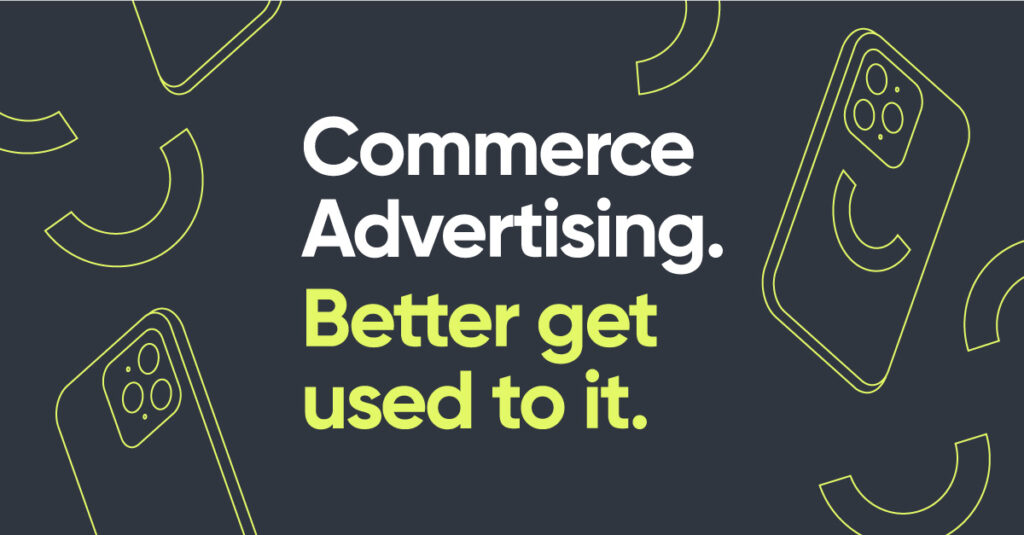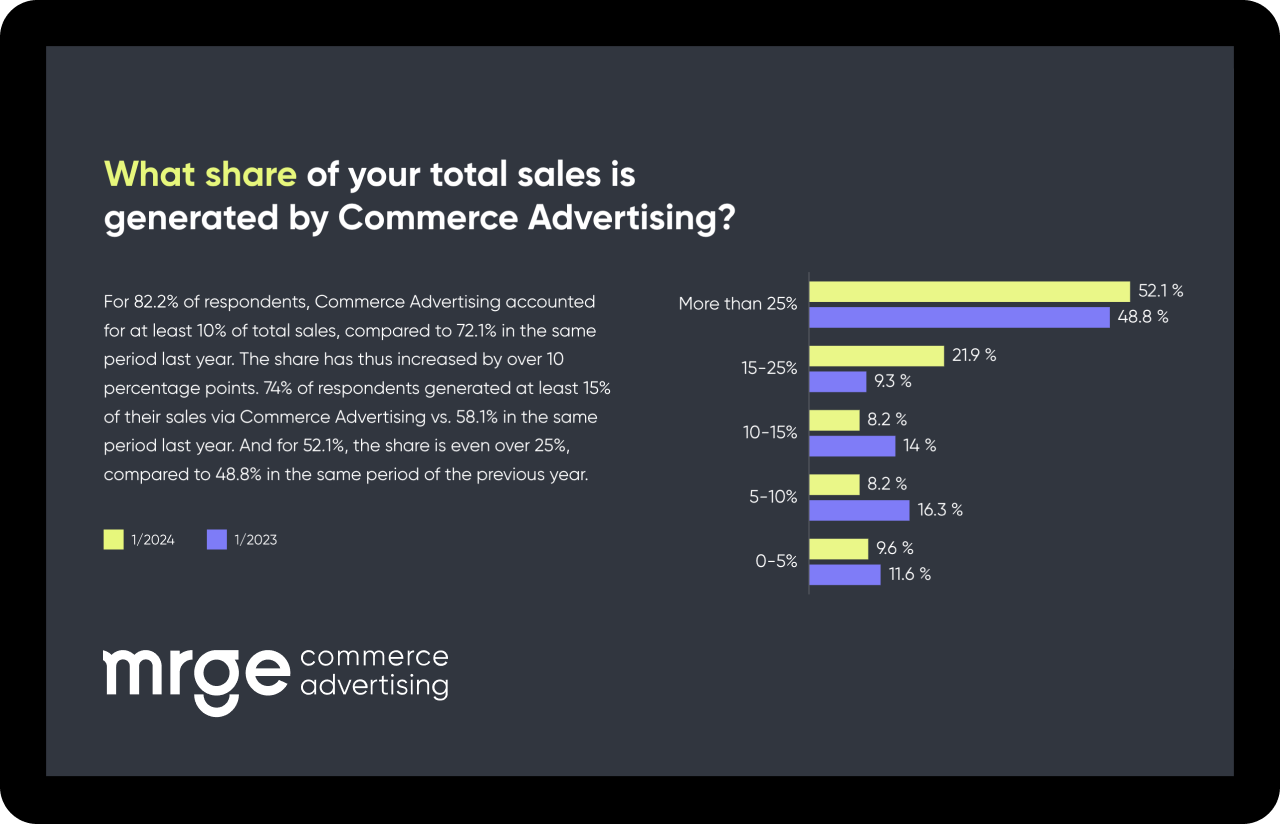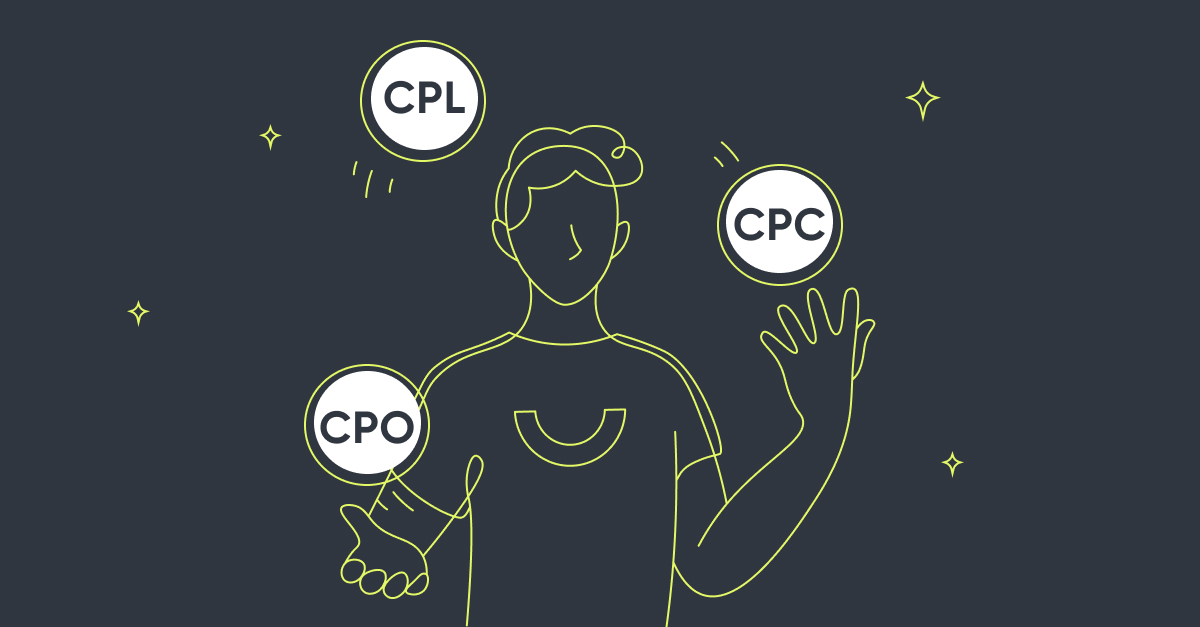With Commerce Advertising, mrge introduces a new umbrella term to digital business. One of the key differences to other marketing terms is that advertising is aligned along the customer journey. How does this work? What exactly is Commerce Advertising? And how can advertisers, as well as publishers and consumers, benefit? Tobias Conrad, CCO of mrge, gives practical answers to these and many other questions.
What exactly is Commerce Advertising?
Tobias Conrad (TC): Commerce Advertising is a newly-coined term. For us, Commerce Advertising stands for all digital advertising formats that are placed within content, or adjacent to content, during purchase-relevant phases of the customer journey, formats that achieve a clearly measurable conversion. In a nutshell, we’re talking about Internet-based advertising measures from the area of e-commerce marketing. They help the advertisers sell their products or services digitally. The measures are placed at action-relevant touchpoints along the customer journey. There, they make an offer that leads to a clearly measurable conversion. Commerce Advertising thus maximizes revenues and ROI for advertisers and reduces branding costs. Advertisers reach their target groups sustainably and effectively, increase conversion, and also support brand awareness downstream. And publishers benefit because their content can be better monetized with these advertising formats.

What is new about Commerce Advertising, what sets it apart?
TC: In Commerce Advertising, we assume that the impulse to buy is not triggered only by the final point of contact. Instead, we see the entire customer journey – the sum of all experiences and touchpoints – as decisive for the purchase. This results in a holistic view of the customer journey, with the goal of seamlessly recording and covering all touchpoints. So we no longer expect the advertising format to achieve a conversion: We look at the user’s actual behavior. Until now, this viewpoint was missing from the conversation about advertising in digital marketing. However, we are convinced that this is the only way advertisers can actually reach their potential customers when and where they make their purchase decision.
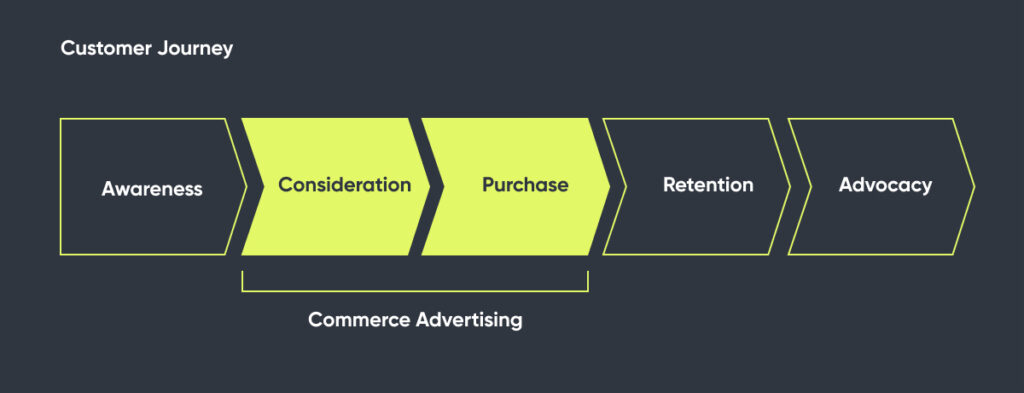
Accordingly, the measures used in Commerce Advertising are based on context, and placed natively within or close to the content – and in the environments – that the customer uses. If we look at the customer journey with the three phases of Awareness, Consideration, and Purchase, Commerce Advertising is primarily active during Consideration and Purchase. Both phases have shifted completely to the Internet as a result of progressive digitalization, rapid e-commerce growth, and increased demands for convenience and home delivery. First, users inform themselves at many different sources. Then, they buy. Advertisers can now model this path through their presence at all points of contact. Unlike other approaches to digital marketing, Commerce Advertising also maps the purchase triggers, such as coupons or price comparison sites. With Commerce Advertising, we provide the approaches and support the paradigm shift.
What advertising formats does Commerce Advertising consist of?
TC: In Commerce Advertising, the formats, such as banners or videos, play a subordinate role, are no longer the focus. We no longer take an inside-out approach and ask “Where can we place a banner?” but “How do our users behave, and at which points of the customer journey should we make them an offer?”
The locations for an advertiser’s presence are decisive: product review and test pages, product and price comparison pages, coupon pages, cashback pages, Google Shopping, and, of course, commerce content. In these formats, advertisers create presence and achieve conversion through a logo or a banner, or simply through a link, as we see in affiliate marketing and commerce content.
Do you have an example of when we encounter Commerce Advertising?
TC: For example, if you’re looking for a running shoe: One way is that you see an ad, a banner, or a video, click it, and land in the store where you buy the shoe. That’s the classic, ad-oriented approach in digital marketing, for those who know what they want. But in fact, it’s often the case that you have a vaguer desire and a need like “My running shoes are worn out and I need new ones.” Then you get information from publishers who enjoy your trust, in the media, blogs, forums, social media, or from influencers. In the next step, you usually make a pre-selection. Then, in the next step, you look for the best price. This is where coupons, cashback, price comparison sites come into play. Finally, you buy the shoe of your choice. Advertisers can accompany all of these touchpoints – search with the search engine, information in publishing offers and social media, product comparison sites, and then price comparisons or discounts – through their presence.
What does Commerce Advertising mean for advertisers in concrete terms?
TC: The Commerce Advertising strategy leads to higher revenues. The measures and their results are measurable at every point. More and more advertisers want to reach their customers directly, summarized by the keyword D2C, Direct to Consumer. With Commerce Advertising tools, this is all the more possible, because the ad appears in an environment that interests the user anyway. So the probability is higher that they will click suitable advertising and achieve demonstrable performance. The advertiser can choose the exact channels to achieve their goal, usually a sale or a lead. Through Commerce Advertising, consumers are then taken directly to the store, or to another offer such a newsletter, a gated download, or registration for an event.
With Commerce Advertising, advertisers set the impulses that are decisive for a purchase, so that a user who informs herself about various products and providers gets a trigger that leads her to their offer. By shaping the entire customer journey, advertisers hold the interest of potential customers much longer.
And, of course, Commerce Advertising is designed to retain existing customers. Advertisers who make offers along the actual customer journey are more likely to close the deal than those who do not.
And what are the challenges for advertisers?
TC: Advertisers must adapt their marketing to the customer journey of their target groups. Marketing managers take a Commerce Advertising approach to data-driven marketing. They know which tools and technologies can be used along the customer journey, and how these interact and affect conversion. They can combine a variety of different tools: from affiliate links to presence in product comparison sites. They need to get to grips with the marketing channels and tools in order to optimally manage their activities and use them profitably.
Commerce Advertising is located in the realm of e-commerce marketing, but also influences neighboring disciplines such as content marketing, couponing marketing and, of course, the advertiser’s pricing strategy.
What is the history of Commerce Advertising, how did you come up with it?
TC: Until now, the MarTech ecosystem had no term for advertising formats based on actual usage behavior and the digital customer journey. But we urgently needed one. Our experience over the past few years in all three mrge companies (digidip, shopping24, and Yieldkit) shows that advertisers’ and publishers’ revenues increase when they use an advertising format based on the user’s individual usage situation. This is a different perspective on digital advertising. And that’s why looked for a term to describe advertising that generates a conversion from the content or from the content environment. And Commerce Advertising expresses exactly that.
You say the perspective is changing: How is the relationship between user, publisher, and advertiser defined now?
TC: Planning under Commerce Advertising conditions focuses on people (the users) and their interests. The selected advertising format takes the user’s context into account. As a result, the ad is geared more precisely to the user’s interests – and this increases the likelihood that the user will click the ad. The advertising offer is received at the point in time when it is relevant to the user. This Commerce Advertising perspective delivers enormous benefits to all parties involved.
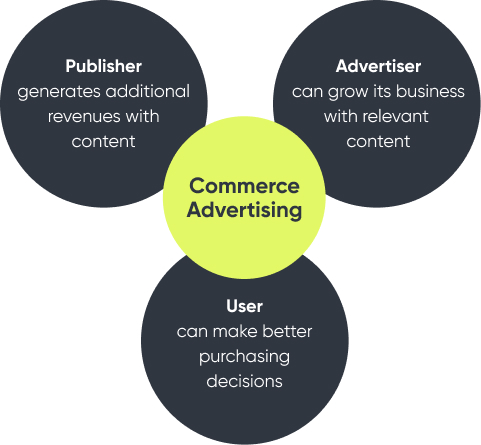
Where does Commerce Advertising stand in relation to affiliate marketing?
TC: Affiliate marketing describes a way to bring publishers and advertisers together. However, the actual digital customer journey of a user interested in a product or, more generally, in a company, is much longer, and involves several touchpoints. Affiliate marketing does not extend far enough to cover all of them, but it remains an important tool within Commerce Advertising.
And how does Commerce Advertising relate to commerce content?
TC: Commerce content describes a strategy of publishers who make their own editorial offer with the aim of monetization. For example, they write product comparisons and place links to the stores or Amazon for the products discussed. Commerce Advertising goes beyond this and also includes ready-made pages on product comparisons and the like, which publishers can individualize and integrate into their offer. This gives publishers an additional option for placing a topic in their editorial environment.
How are you expanding Commerce Advertising? What’s next?
TC: Commerce Advertising as an umbrella term is understood and increasingly used by publishers and advertisers alike. We are now working to establish this user-focused view in digital marketing.
With mrge, our goal is to make our Commerce Advertising suite the world’s most profitable connection between advertisers and publishers. It provides advertisers with everything they need to scale efficiently, improve performance, and increase sales. And publishers get all the monetization tools they need to generate additional revenue – while adding value for their users.
